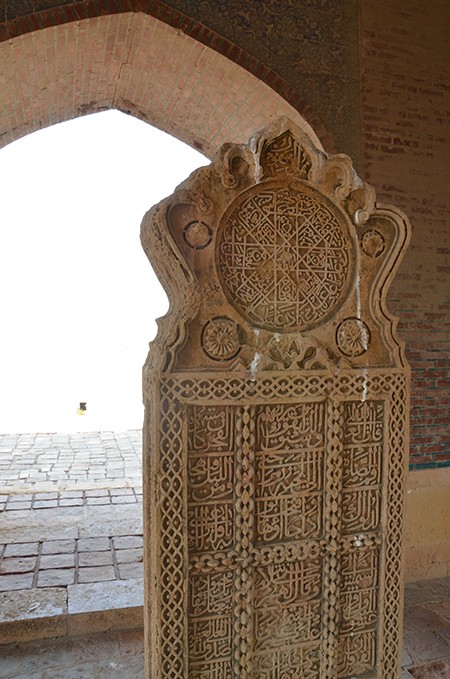“Where all manner of mendicants, free spirits, literati, and other intellectuals arrived”: so Thatta is described in Chahar Chaman (The Four Gardens), a celebrated memoir of life at the court of the Mughal emperors of Delhi penned by the poet and state secretary Chandar Bhan Brahman (d. c. 1666–1670), as translated in Rajeev Kinra’s account of Bhan, Writing Self, Writing Empire (2015). Indeed, Thatta, a port city in southern Sindh and a significant entrepôt in the trading zone that had connected the Arabian peninsula, Central Asia, and the Indian subcontinent since antiquity, had long been an entry point and welcome space for the itinerant avant-garde. The unique position of Sindh made it a space of global mobility and cosmopolitanism, with a visual culture rich in traces of these long-distance connections. Operating in a liminal zone at the periphery of powerful empires, the artists of southern Sindh were dynamic innovators. They engaged actively with the diverse cultural traditions they encountered, creating artistic products that reflect the transregional and transcultural network of which they formed a part. The incommensurability of these buildings and objects with the existing disciplinary conventions of Islamic and South Asian art history have resulted in their general absence from both fields. And yet, they have the potential to challenge long-established notions of civilizations and cultures as hermetically sealed, by calling attention to the cultural productivity of cosmopolitan centers and mercantile networks, even in what are considered marginal or interstitial centers such as Sindh.
My dissertation focuses on the Makli necropolis, a funerary complex on the outskirts of Thatta. Makli was conceived as a modest hermitage for Sufi mystics sometime in the late fourteenth century, but subsequent building on the site transformed it into a vast cemetery; by the mid-seventeenth century the site covered more than ten square kilometers. Located on a natural ridge, the necropolis’s extraordinarily diverse architecture of carved stone monuments and tile-clad brick tombs stretched along the Indus River, creating a striking vista visible from afar. Existing scholarship on Makli has focused on a few monumental structures, approaching them as singular artifacts, profoundly disconnected from its spatial context. This fragmentary approach has eclipsed the critical role that accretional building practices played in establishing the necropolis as a unified space. Through a comprehensive diachronic study of Makli, one that approaches the site through the sociopolitical affiliations of different dynastic polities in Sindh in this period, Islamic funerary beliefs and practices, and trade and pilgrimage networks, this dissertation aims to disentangle the layers that make up the Makli necropolis and demonstrate the potential of such an examination for the study of built environments in both their tangible and intangible aspects.
Taking into account the broader context of Islamic funerary architecture, I discuss the critical role played by religion—emerging from both orthodox Muslim traditions and popular piety—in shaping the site. Primary textual sources and architectural evidence for funerary practice, particularly the use of extensive inscriptional programs to commemorate the dead and perhaps also to direct ritual practices, are foundational for this investigation. This research demonstrates that Sufi saints were the central figures in Makli’s development: during their lifetimes; through their philosophies, teaching, and political affiliations; and in death, when Sufi bodies—through burial, enshrinement, and pilgrimage—became the spatial anchors of a sacred landscape.
As pilgrims of all socioeconomic classes flocked to the site, vying to be buried in the shadow of these venerated saints, they built tombs and cenotaphs that reflected their varied cultural traditions. These monuments index the mobility and migrations of a wide variety of ethnic and religious groups, including the artisans, craftsmen, and patrons responsible for their construction. Turning to unstudied material remains, such as manuscripts and administrative documents, as sources of information that complement the architectural styles employed at Makli, I explore the modalities of artistic transmission and the processes of selective appropriation and transformation that local artists employed to assert their own aesthetic sensibilities. The constitutive nature of accretional building also meant that these new cultural products stood alongside earlier architecture, and the dissertation’s longue durée approach emphasizes how Makli came to be a conceptual and material palimpsest. The visual and material culture of southern Sindh displaces singularly conceived architectural, formal, and historical categories that have long governed the study of Indian and Islamic art history, demonstrating the need to rethink these formulations beyond simplistic notions of identity, culture, and temporality.
